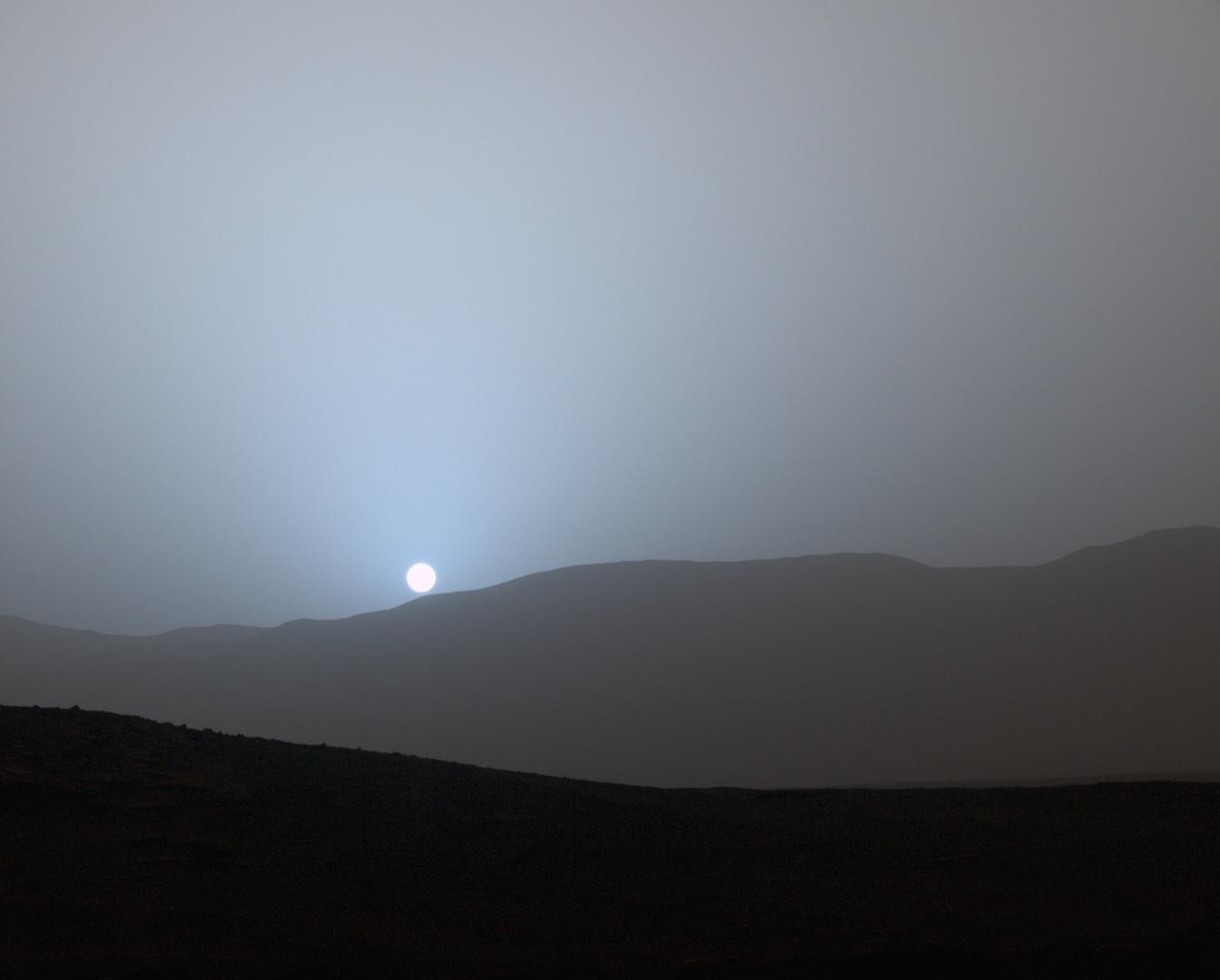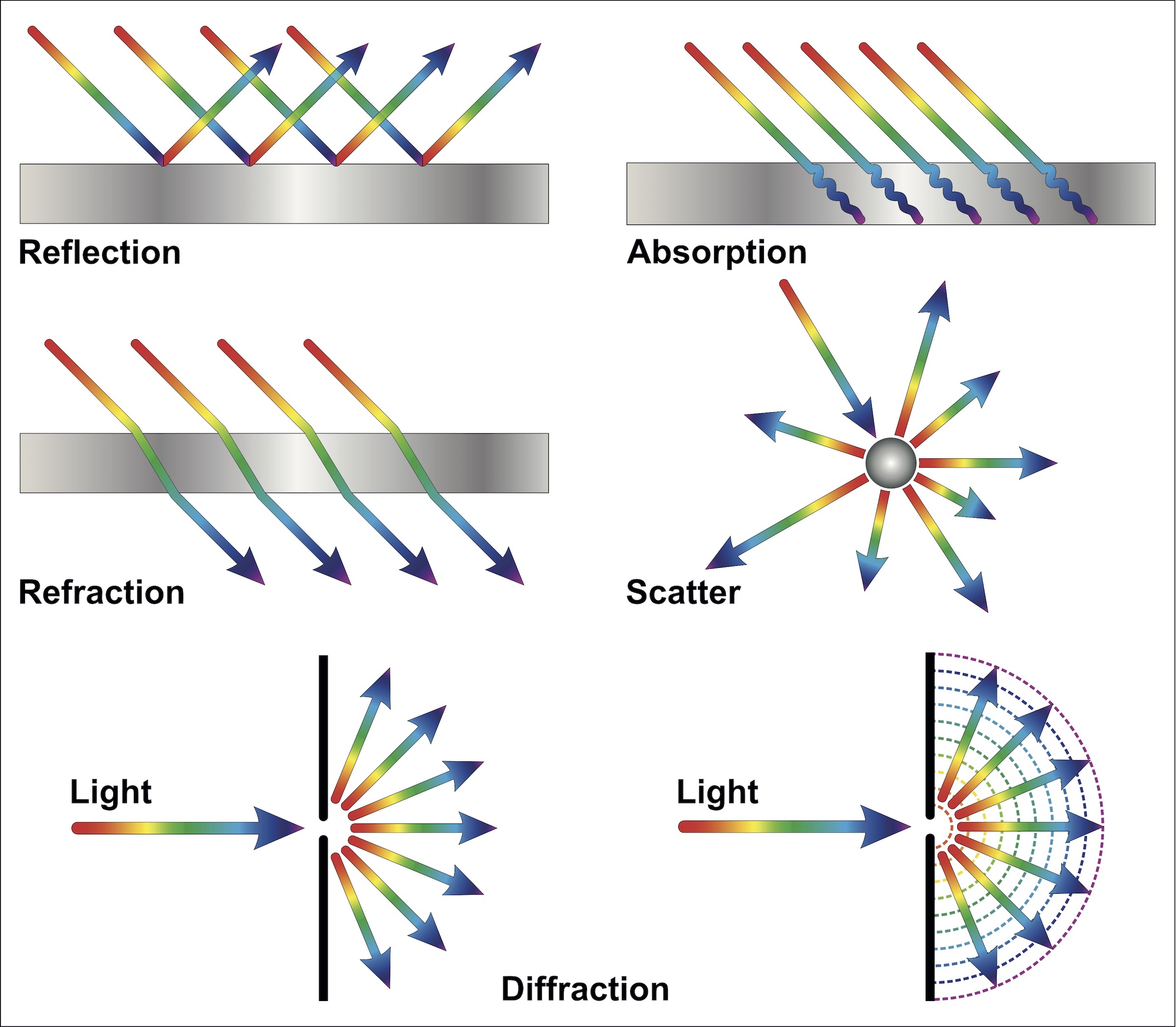What color is the sunset on other planets?

Fiery rose and peach sunset skies are a unique perk of our home on Earth. But what colors appear when the sun sets on other planets in the solar system?
The answer depends on the planet. On Mars, the sun comes and goes with a blue glow. On Uranus, the sunset sky transitions from blue to turquoise, according to NASA. And on Titan, one of Saturn's moons, the sky turns from yellow to orange to brown as the sun dips beneath the horizon.
Sunset colors aren't uniform because, in large part, these hues are a product of each planet's atmosphere and how the particles in it scatter sunlight, according to Kurt Ehler, a professor of mathematics at Truckee Community College in Reno, Nevada, and lead author of a 2014 paper in the journal Applied Optics that investigated why the Martian sunset appears blue.
Related: Do other planets have solar eclipses?
"It’s tricky," Ehler told Live Science. "Everyone had a preconceived notion that the mechanism [for sunsets] is a replication of what we see on Earth." But that’s not the case.
On Earth, the atmosphere is made up of tiny gas molecules, largely nitrogen and oxygen, which are more effective at scattering — that is absorbing and re-emitting in a different direction — short wavelength light, like blue and violet, than it is longer red wavelengths. The selective type of scattering caused by small molecules is called Rayleigh scattering. It gives us a blue sky at midday, but at sunset and sunrise, when the sunlight must travel farther, more of the blue light gets scattered away; it’s the longer red and yellow wavelengths that reach our line of sight, creating the vibrant shades of red that we see.

Any planet whose atmosphere is dominated by gas will follow a similar pattern of longer wavelength-colors becoming more dominant at sunset, Ehler said. On Uranus, for instance, the gas particles of hydrogen, helium and methane in its atmosphere scatter the blue and green shorter wavelengths while absorbing (but largely not re-emiting) longer red wavelengths, according to NASA. This creates a bright blue sky that turns turquoise at sunset as blue light is scattered away relative to the longer, greenish wavelengths.
Get the Space.com Newsletter
Breaking space news, the latest updates on rocket launches, skywatching events and more!
If a planet's atmosphere is dominated by something other than gases, everything about how the sunset appears is going to be different. Take the blue Martian sunset. "The density of atmospheric gas is only about 1/80 of what it is here," Ehler said of Mars. "The scattering is dominated by larger particles of dust."
In a 2014 study that used data from the Mars rover Spirit, Ehler and his colleagues found that Martian dust scatters light very differently than gas molecules do. "The reason for [the] blue sunset is the pattern in which light scatters off those [dust] particles," he said.
Gas molecules, like the ones here on Earth, scatter light in every direction. In contrast, dust scatters light primarily in one direction — the forward direction, Ehler said. What's more, dust particles scatter red light at much wider angles than blue light does. Because the blue light isn’t scattered very widely, it becomes more concentrated, so "the blue light is about six times as intense as the red light" on Mars, Ehler said.
Related: How much would you weigh on other planets?
When you look at the Martian sunset, you actually see that "the disk of the sun is white, because light doesn't change color as it passes through the Martian atmosphere," Ehler said "Around the sun there’s a bluish glow. And further out, the sky starts looking reddish. There, you’re seeing red lights scattered at larger angles."
As for the other planets and moons, it’s nearly impossible to predict how the sunset will look without having a thorough understanding of their atmospheric composition. If these celestial bodies have a gaseous atmosphere, you’d expect to start seeing longer wavelengths of light at sunset, Ehler said.
"Where [the] atmosphere is dominated by other substances, I can’t tell you," Ehler said. Different types and size distributions of dust will scatter light in unique ways. In other words, if you think a sunset on Earth is "out of this world," think again — it's really an exclusive feature particular to planets with gaseous atmospheres.
Originally published on Live Science.
Join our Space Forums to keep talking space on the latest missions, night sky and more! And if you have a news tip, correction or comment, let us know at: community@space.com.
-
Helio Reply
Nice article, and great paper. I'll need more time to absorb more and reduce how scattered I am now. ;)Admin said:It depends on whether the planet's atmosphere is predominantly filled with gas or dust particles.
What color is the sunset on other planets? : Read more
But... I would bet them an ice cream sundae that, to a human-Martian through a neutral filter, the disk of the Sun would not appear blue, and neither will it appear pink as in this article's depiction from the NASA rover. It will likely look just plain white because the brain likes to color correct the whitest and brightest object by making, in this case, the Sun the white object. Cameras do it also.
I enjoyed the ironic fact that the Martian sky absorbs blue making it less likely to see the regions near the Sun as blue, but they note that the blues are only slightly less absorbed vs. the reds. The selective scattering, therefore, greatly dominates the blue effect since the particle sizes, apparently of dust not CO2, is in that ideal micron or slightly less range -- too big for blue photons to scatter but fine for scattering the red photons.
What is all too often misstated, but not in the article I don't think, the Sun's dominant energy wavelength isn't yellow or green, but blue. So blue light gives this scattering a boost.
-
Helio Another cool question is what happens to an extended object (non-point source) if your telescope aperture is, say, 10x that of the eye (pupil). How much will it gain in surface brightness (mag. per unit area)?Reply -
Lovethrust Color is dependent on context, so it would be difficult to say exactly what the eye were to perceive colorwise on other planets. The brain has a tendency to want to “normalize” the color we see as well which would play a factor. Try reading under a colored lightbulb. At first everything is saturated that color but slowly your brain reacts making that color seem more like normal full spectrum light. Turn off the lamp and go in a normal lit room and suddenly it seems to be the color of the colored lightbulb for a few minutes. Try it out it’s quite a neat effect!Reply -
Helio Reply
Yes. There are many dramatic examples. The one I like perhaps the best is looking at an older style (tungsten) head lamp in the daytime as it will appear distinctively yellow on a clear day. At night, it becomes much whiter. "White balance" is the term used for cameras, though color constancy is often used for how the eye color shifts.Lovethrust said:The brain has a tendency to want to “normalize” the color we see as well which would play a factor. Try reading under a colored lightbulb. At first everything is saturated that color but slowly your brain reacts making that color seem more like normal full spectrum light. Turn off the lamp and go in a normal lit room and suddenly it seems to be the color of the colored lightbulb for a few minutes. Try it out it’s quite a neat effect!
The key point, however, is that the brain favors the whitest and brightest light to be the reference to allow the best color shift. So, in broad daylight, the car lamp with its much lower color temperature will appear yellow compared the ambient white sunlight. But at night, the best "white" source is the headlamp so the brain shifts this source light white or close to white in order to color correct all that it illuminates in order to simulate what we would have seen under normal sunlight.
If so, then looking directly at the Sun from Mars, the Sun that might appear, by calculation, slightly blue, per the article, or slightly pink, per the image shown will be color shifted by our brains to become the dominant reference light source, as the Sun always is. I don't know this for certain, but I'm fairly sure this is correct.










